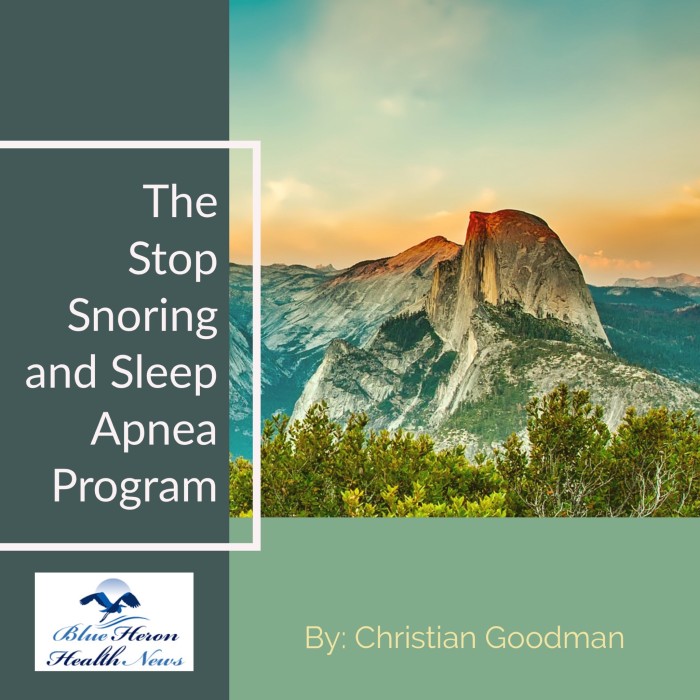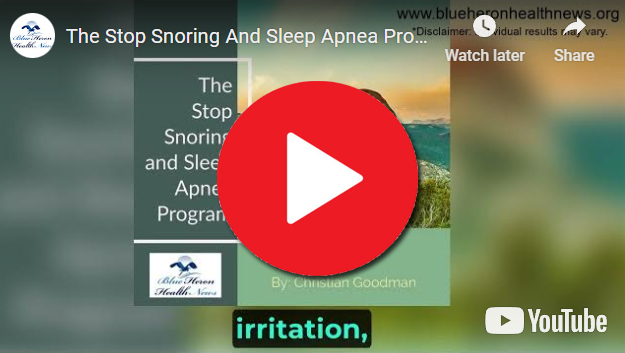
The Stop Snoring And Sleep Apnea Program™ a well-researched program created to help stop snoring and sleep apnea so that you can have a good night sleep. The techniques that you will learn from this program works immediately. It will only take you 3-7 minutes to perform these simple exercises that the author has recommended but the results that you will get will help you have a good night sleep as soon as tonight. Within a week, snoring will be a thing of the past.
What are the common myths about vertigo and dizziness?
There are several common myths about vertigo and dizziness that can cause confusion and delay in diagnosis and treatment. Some of the most common myths are:
1. Vertigo and Dizziness Are the Same Thing
Myth: A lot of people use “vertigo” and “dizziness” interchangeably, but they are different.
Fact: Vertigo is actually the sensation of spinning or movement, typically due to issues with the inner ear or brain. Dizziness is a broader term that includes feelings of lightheadedness, unsteadiness, or a floating sensation, which may or may not be accompanied by vertigo.
2. Vertigo Only Affects Older Adults
Myth: Vertigo is commonly thought to be experienced by older adults only.
Fact: While vertigo is more common with aging, people of all ages can experience it. Conditions like benign paroxysmal positional vertigo (BPPV), vestibular migraines, or Meniere’s disease can affect younger individuals as well.
3. Vertigo Is Always a Sign of a Serious Health Problem
Myth: Some believe that experiencing vertigo means there’s a serious underlying issue like a stroke or brain tumor.
Fact: While vertigo can be a symptom of serious conditions, the most common causes are benign, such as BPPV or inner ear infections. It’s important to get a professional diagnosis to rule out serious issues, but not all vertigo episodes are linked to life-threatening conditions.
4. Vertigo Means You’ll Lose Your Balance Completely
Myth: People often assume that vertigo always leads to complete loss of balance and falls.
Fact: While vertigo can make you unsteady, it does not always lead to a total loss of balance. A majority of individuals can still walk and move around even while suffering from vertigo, especially with treatments that help relieve the symptoms.
5. Dizziness Is Caused Only by Inner Ear Problems
Myth: It is commonly assumed that dizziness or vertigo is always due to a problem in the inner ear or vestibular system.
Fact: While the inner ear is a common source of dizziness, there are other sources as well (e.g., neurological conditions like vestibular migraines, multiple sclerosis, cardiovascular conditions like low blood pressure, arrhythmias, and even anxiety or dehydration).
6. Medications Are the Only Way to Treat Vertigo
Myth: It is believed by some that medications are the only means of treating vertigo and dizziness.
Fact: Although symptoms can be managed by antihistamines or anti-nausea drugs, other treatments like vestibular rehabilitation therapy (VRT), lifestyle changes, or physical therapy can be very effective at addressing the underlying cause of vertigo.
7. You Should Avoid Physical Activity When Experiencing Vertigo
Myth: Some people think all activity should be avoided when you’re experiencing vertigo or dizzy.
Fact: In fact, ongoing activity with the right kinds of exercises (like balance training or vestibular rehabilitation exercises) can enhance balance and reduce dizziness in the long run. Bed rest can sometimes worsen symptoms.
8. Vertigo Can’t Be Prevented
Myth: Many view vertigo as inevitable once it starts, with no way to prevent future attacks.
Fact: While some vertigo causes, like BPPV, can recur, lifestyle changes, specific exercises, and medical therapies can prevent or minimize the recurrence of future episodes. Managing underlying conditions (e.g., keeping blood pressure under control or treating migraines) can also help.
9. Vertigo Will Go Away on Its Own, No Need for Treatment
Myth: It is a widespread belief that vertigo will disappear on its own without the need for any medical intervention.
Fact: While some vertigo improves by itself, a number of people are relieved by treatment, especially if the vertigo is repeated or associated with a long-term issue. It can reduce the severity and duration of the symptoms if treated early.
10. All Vertigo Is Caused by BPPV
Myth: Since benign paroxysmal positional vertigo (BPPV) is one of the most common causes of vertigo, some people mistakenly believe all vertigo is due to BPPV.
Fact: BPPV is a common cause, but other conditions like vestibular migraines, Meniere’s disease, vestibular neuritis, and neurological conditions also lead to vertigo. A diagnostic evaluation needs to be performed to identify the cause.
Being aware of these myths and facts will allow you to manage dizziness and vertigo from a more informed position and seek proper treatment or intervention when necessary.
To treat dizziness caused by anxiety or panic attacks, one has to treat both the physical dizziness and the anxiety itself that results in such attacks. What follows is a comprehensive approach to treating dizziness caused by anxiety:
1. Engage in Deep Breathing Exercises
Diaphragmatic Breathing: Deep, slow breathing can calm your nervous system and relax the sensation of dizziness. Breathe deeply in through your nose to a count of four, hold for four, and then slowly breathe out through your mouth to a count of six.
Box Breathing: Box breathing is another technique where you inhale for a count of four, hold for a count of four, exhale for a count of four, and hold once more for a count of four. This reduces anxiety and prevents hyperventilation, which worsens dizziness.
2. Use Grounding Techniques
Focus on Your Senses: Grounding exercises can shift your focus away from dizziness and into the here and now. Try to engage your senses—describe in great detail an object you notice around you, hold an object in your hand and its texture, or listen to calming sounds in the space.
5-4-3-2-1 Technique: A simple grounding exercise is when you notice:
5 things you can see
4 things you can touch
3 things you can hear
2 things you can smell
1 thing you can taste This helps to redirect your focus to the here and now and reduce the physical and emotional sensations of anxiety.
3. Control Your Breathing to Prevent Hyperventilation
Avoid Overbreathing: Anxiety tends to make one hyperventilate (breathe shallowly and rapidly), and this can bring about dizziness. Attempt to breathe slowly and deeply instead of quickly and shallowly. Hyperventilation lowers the carbon dioxide level in the blood, leading to dizziness.
Breathe into a Paper Bag: If you’re hyperventilating, breathing into a paper bag for a few minutes will reinstate the oxygen-carbon dioxide balance in your body and cause the dizziness to disappear.
4. Manage Stress and Anxiety through Mindfulness
Mindfulness Meditation: Daily mindfulness exercises can keep you grounded and less anxious. Guided meditations on apps such as Headspace, Calm, or Insight Timer are specifically aimed at lowering stress levels and enhancing emotional awareness.
Progressive Muscle Relaxation (PMR): Tense, and then slowly relax, each of the muscle groups in your body, starting with your toes and working your way up to your head. This relieves physical tension, which can lessen anxiety and dizziness.
5. Focus on Relaxation Techniques
Visualization: Try to visualize a peaceful, calming scene—a beach, forest, or garden, for example. Engage all of the senses in this visualization to maximize the sense of relaxation and distract yourself from the panic and dizziness.
Yoga or Tai Chi: Both the physical and emotional symptoms of anxiety can be managed using slow movements that focus on breath and body awareness. Postures like child’s pose, cat-cow stretch, and corpse pose promote relaxation and let go of physical tension responsible for dizziness.
6. Address the Root Causes of Anxiety
Therapy: When anxiety is a frequent culprit for dizziness, therapy sessions with a therapist, particularly one experienced in Cognitive Behavioral Therapy (CBT), can aid in controlling the underlying behaviors and thoughts responsible for anxiety and panic attacks.
Exposure Therapy: In cases where there are identifiable triggers (e.g., crowds, situations, or locations) for panic attacks, exposure therapy can gradually desensitize your response to these triggers, reducing how often and how badly anxiety-induced dizziness occurs.
7. Adopt a Healthy Lifestyle
Regular Exercise: Exercise can normalize your body’s reaction to anxiety and improve your overall sense of well-being. Regular physical activity like walking, swimming, or cycling can reduce anxiety in the long term and improve balance, which can reduce dizziness.
Healthy Diet and Hydration: Ensure that you’re hydrating and taking regular, nutritious meals. Dehydration or low blood sugar can worsen dizziness, especially in anxious situations.
Adequate Sleep: Poor sleep can exacerbate dizziness and anxiety. Sleep for 7-9 hours every night to promote mental and physical health.
8. Use Relaxation Aids
Aromatherapy: Aromatherapy using essential oils like lavender, chamomile, or peppermint can relax and calm anxiety. Rub diluted oils on the temples or wrists or use a diffuser to relax stress and reduce dizziness.
Biofeedback: Here, you employ a machine to monitor physiological responses (i.e., heart rate, muscle tension) and learn to manipulate them. Biofeedback can help you manage physical anxiety symptoms, including dizziness.
9. Take Medication if Necessary
Short-Term Use of Anti-Anxiety Medications: Occasionally, medications like benzodiazepines (like lorazepam or alprazolam) are prescribed to manage the immediate symptoms of anxiety and dizziness. These, too, are typically for short-term use since they can be habit-forming.
SSRIs or SNRIs: In individuals who suffer from chronic anxiety or panic disorder, doctors occasionally prescribe medications like selective serotonin reuptake inhibitors (SSRIs) or serotonin-norepinephrine reuptake inhibitors (SNRIs), which have the effect of reducing anxiety over a period of time and, consequently, the accompanying dizziness.
10. Seek Professional Help
Consult a Therapist or Psychiatrist: When anxiety or panic attacks are extreme or frequent, it’s important to speak with a mental health professional to develop a treatment plan. Medication and therapy (especially CBT) can be extremely effective at reducing both anxiety and dizziness.
Vestibular Rehabilitation: In cases where dizziness persists even after anxiety is controlled in certain people, vestibular rehabilitation therapy (VRT) with a skilled therapist can help enhance balance issues and reduce dizziness.
Conclusion
Treatment for dizziness caused by anxiety or panic attacks comprises physical, mental, and lifestyle changes. By addressing both the immediate effects (like dizziness) and the anxiety itself, you can significantly improve your quality of life and reduce how often these incidents occur. If anxiety-induced dizziness is affecting your daily life, speaking to medical professionals can tailor an approach that will suit you best. Would you like to receive more detailed information on any of these techniques or further guidance on seeking professional help?

The Stop Snoring And Sleep Apnea Program™ a well-researched program created to help stop snoring and sleep apnea so that you can have a good night sleep. The techniques that you will learn from this program works immediately. It will only take you 3-7 minutes to perform these simple exercises that the author has recommended but the results that you will get will help you have a good night sleep as soon as tonight. Within a week, snoring will be a thing of the past.